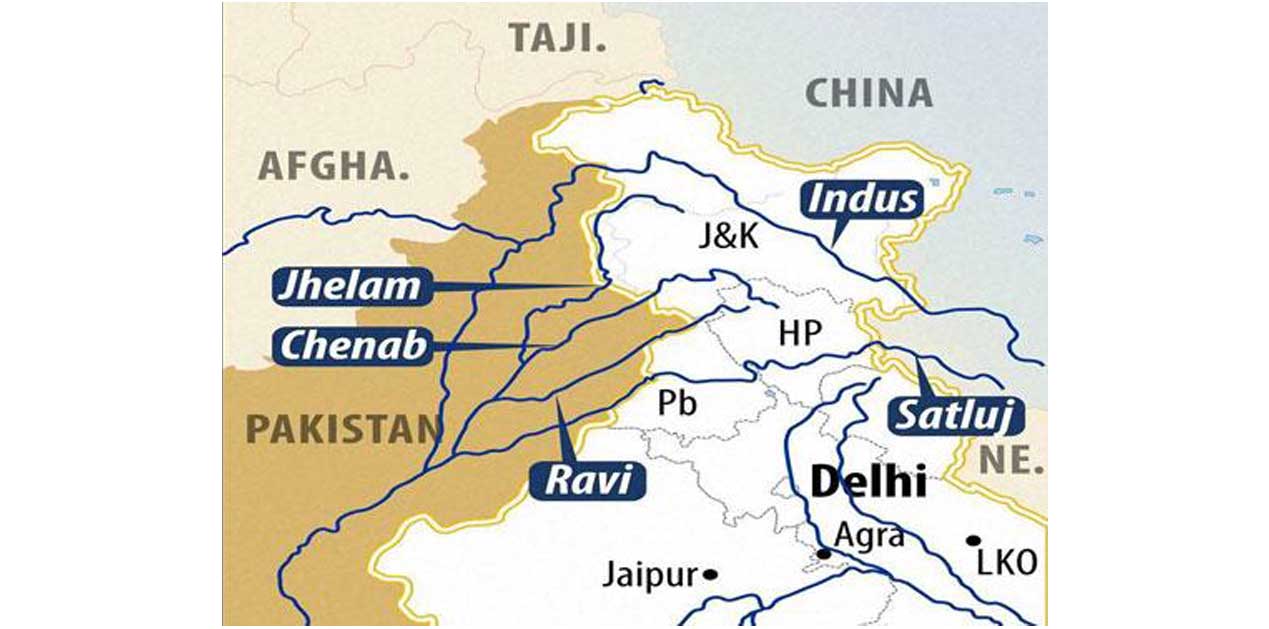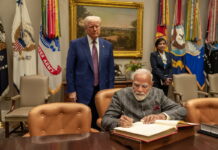Anuttama Banerji
In these strained times between India and Pakistan, a close look at the Indus Waters Treaty, which has endured the test of time and hostility, could provide a way ahead out of the impasse in ties between South Asia’s largest countries.
Water, the elixir of life, is a scarce resource and water scarcity has led to conflict and violence. States are competing with each to wrest control of water resources. The question of water security has to be viewed in this context.
The relationship between water and society in South Asia is complex because ‘control over water’ is a symbol of socio-political power..
In the 21st century, water security issues have taken a front seat in South Asia. Water resources are a ‘commodity’ rather than a natural endowment in the region and differences over water sharing continue to exist. However, the Indus Waters Treaty (IWT) is an exception and has endured the test of time. It was signed between India and Pakistan in 1960 and it is important to re-examine the IWT and discuss its enduring relevance for India and Pakistan.
. The Indus river originates in Tibet and, after flowing through Jammu and Kashmir, enters Pakistan. The waters of the Indus are shared by China, India, Pakistan and Afghanistan. The Indus is part of the shared cultural ethos of both India and Pakistan. The banks of the Indus have absorbed traditions like Buddhism and Islam. The Buddha lived along its banks while Guru Nanak, the founder of Sikhism, attained enlightenment while bathing in the Indus. It is a river that has traversed both history and geography.
In February 1954, the World Bank proposed that (a) historic withdrawals must be continued (b) the three eastern rivers be assigned to India and the three western rivers assigned to Pakistan (c) Pakistan would have a transition period of five years to construct link canals to allow replacement of water supplies from the eastern rivers. The Indus was thus ‘officially partitioned’. India accepted the recommendations in March 1954. Pakistan agreed to the recommendations after India agreed to partly finance the construction of replacement works (Tarbela Dam on the Indus and Mangla on the Jhelum, among others)
The Treaty was signed between India and Pakistan in 1960. It stated that India would not store or construct any storage works on the western rivers. India was allowed to use the water of the western rivers for hydro-electricity before the rivers enter Pakistan. A Permanent Indus Commission (PIC) and a dispute settlement mechanism was also established. Overall, Pakistan was allocated 80% of the waters while India had access to 20% of the waters, though India’s historical usage of the Indus and its tributaries stood at 10%.
The Indus river system has, from the beginning, played a role in the evolution of the Kashmir dispute, where the territorial dispute is taking a backseat and river-water issues are now critical. The territorial issue has almost reached a de-facto settlement. Today’s dispute is less about Kashmir and Kashmiris and more about a river system with its headwaters in Kashmir. The raison d’être of Pakistan’s existence is linked to Kashmir not just because of the commonality of religion, but because of the water resources available there. Pakistan wants to derive maximum benefit from the existing status quo while keeping the issue alive at the rhetorical level.
Since Kashmir is important for India to fulfil its hydroelectric energy needs, India wants to secure its position there. Pakistan relies on the Indus waters for its survival. Pakistan faces extreme weather conditions that has aggravated the problem of food insecurity. The total population facing food insecurity in Pakistan is around 22.5 %. While people in the federal territory of Punjab are better off, those in Balochistan and Khyber Pakhtunkhwa face critical shortages.
Is revision of the IWT possible today? The answer can be both a ‘yes’ and ‘no’. Ramaswamy Iyer, a scholar, favours joint management of the river waters. He contends that a share of 20% of the water to India was not ipso facto low and that historical usage did not determine a country’s future needs or requirements.
. Thus, by signing the IWT, both countries have safeguarded their long-term water supplies from the Indus River Basin.
.The IWT is both permissive and restrictive towards India. A system of checks and balances exist within the Treaty. As B G Verghese said, the Treaty has “triumphed” because it enhances the chances of dispute resolution between India and Pakistan. It is, therefore, in the mutual interest of both countries to ensure that the Treaty is saved and remains in the current form.
(The writer has a Master’s in International Relations from the London School of Economics)







